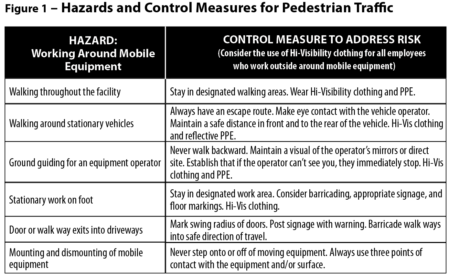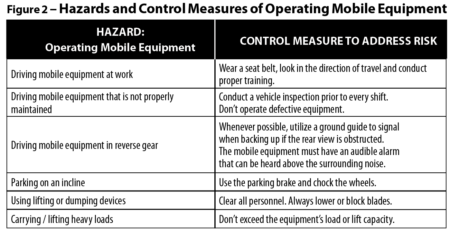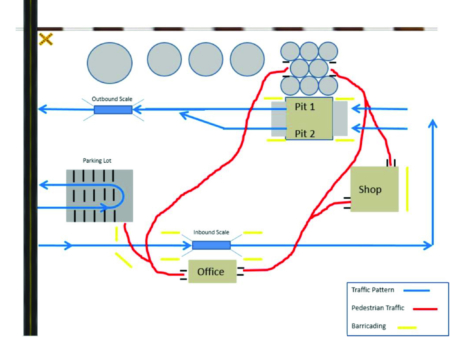Struck-by injuries and fatalities involve conventional vehicles, forklifts, semi-trucks, and other moving industrial equipment, such as cranes and yard trucks.
With harvest in full swing and additional traffic present at facilities, certain precautions should be taken to ensure a safe work environment for both your employees and customers.
The Occupational Safety and Health Administration (OSHA) General Industry and Grain Handling Standard does not have specific motor vehicle requirements for the commercial grain handling industry. However, the association’s Construction Standard has a specific section addressing the issue which can be found at osha.gov/training/outreach/construction.


During harvest, many types of grainhauling conveyances enter a facility to cross the scales and dump the load at unloading pits. In addition, facilities operate mobile equipment like payloaders, tractors, and skid steers that require specific training and precautions.
With the increased mobile and personnel traffic at facilities during harvest, there is a greater risk to those who do not implement practical preventive measures, such as:
• Ensuring that walkways are appropriately marked and that correct signage is posted to increase employees’ awareness that a hazard may be present in the area. It also communicates to machine operators that people are on foot in the area and that they should adhere to the posted speed signage and stay within their operational space.
• Developing an overlay of your facility will help in the training of new employees, as well show machine operators their designated route through the facility. Facility maps can be posted at dump pits and the scale area.
• Discussing blind crossways and exits leading into traffic areas can aid in deciding what signage is to be posted and where barricades could be best used.
This article is one in a series of Safety Tips published by the National Grain and Feed Association (NGFA), Arlington, VA (202-289-0873). To view more NGFA Safety Tips, go to ngfa.org and click on Issues.
SAMPLE TRAFFIC FLOW DESIGN





